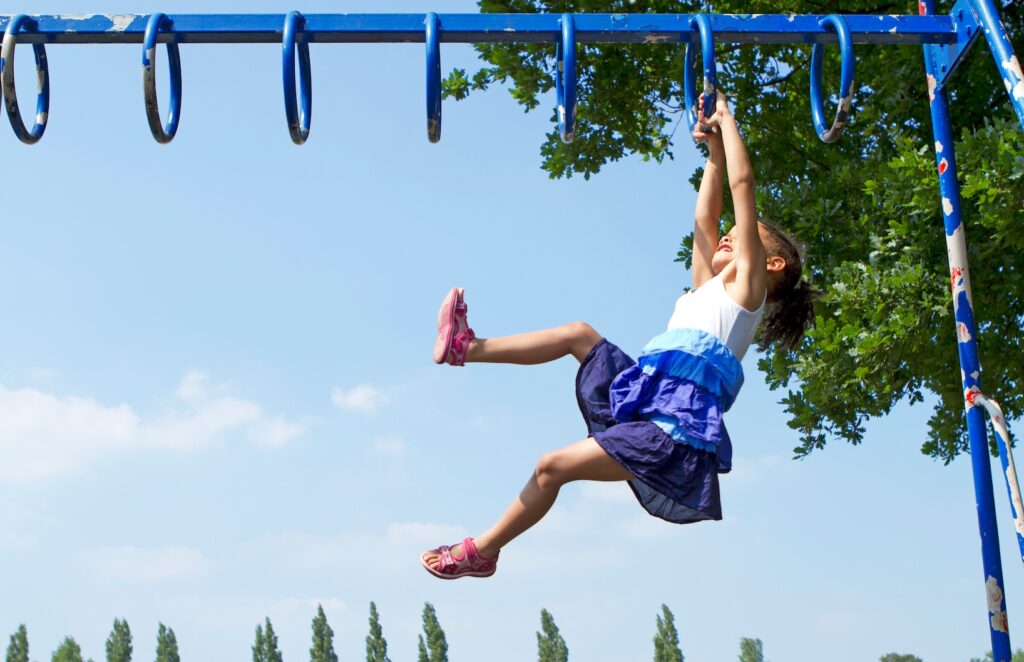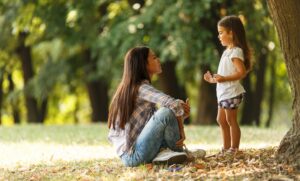Researchers: Risky play helps today’s kids, the safest in history
Scared your child will get injured from too much rough play?
Anthropologists now counter with an even greater danger: denying children the benefits of risk-taking while they’re still young…

Scared your child will get injured from too much rough play?
Anthropologists now counter with an even greater danger: denying children the benefits of risk-taking while they’re still young enough to recover.
“The risk of not allowing a child to explore this ancestral drive to find out his or her limits and the long-term psychological effects of removing thrill-seeking catalysts like the monkey bars is only now beginning to be understood as a possibly greater one than a broken bone that will heal,” warns Carly Miller for Forbes.com.
Miller cites a recent study from Dartmouth College, which argues “risky play” in childhood demonstrates a biological need to develop both physical and cognitive abilities.
“The past and the present point to children gaining physical and experiential skills by exploring their boundaries through play,” said Luke Fannin, one of the study’s authors. “Our physiology as children is still conducive to climbing, running, and jumping, as well as more easily recovering from injuries and short-distance falls.”
Physical advantages
Humans have performed unsafe endeavors for thousands of years out of necessity, Miller explains: “People in hunter-gatherer cultures have been known to climb as high as 150 feet into trees to collect food.”
Such accomplishments highlight the benefits of modern-day risky play, which involve a wide range of physical advantages continuing into adulthood – including physical awareness, skeletal muscle development, and dexterity.
“The Dartmouth data review found that playgrounds with equipment that tests a child’s abilities stimulated 12% more vigorous activity in the children visiting them,” Miller writes. “Additionally, children with regular access to this type of play and playground equipment showed improved motor skills, dexterity, balance, and coordination over those who did not have access.”
However, critics of risky play often point to the potential for injuries. Playground jungle gyms and monkey bars have fallen into disfavor as a result, as most cities “find it easier to just remove the structures” rather than enforce safety guidelines, according to Dartmouth researchers.
Anthropologists found this approach problematic, since the actual risk of getting a playground injury remains relatively low.
One study estimates it “at no more than 0.59 in 100,000, which is far less than injuries sustained through organized sports or even gym class.”
“Free play lets kids modulate activities to match their physical abilities and personal confidence,” Fannin explained. “The rules and guidelines of free play develop on much longer timescales than supervised and organized sports where adults set the rules and expectations. Kids getting injured in organized sports has a lot to do with the social context in which they occur.”
‘Risky play helps prevent injury’
Additionally, the children who do experience common injuries – such as forearm fractures after a fall – have a good chance of complete recovery without long-term damage.
“The Dartmouth study proposes that the benefits of (forearm injuries) outweigh the costs, arguing that our limbs heal quickly and completely, from low- to moderate-height falls, especially as juveniles,” Miller notes.
“Fossil records, as well as contemporary pediatric data, demonstrate that broken forearm bones routinely heal completely.”
Ironically, trying to prevent all risks during childhood play may cause more injuries over time, according to Miller.
“Other studies cited have shown that risky play helps prevent injury as children sharpen their perceptions of risk in a play scenario. Anthropologists have also found that children as young as four heed their own internal cues for risk, meaning they show caution when approaching playground equipment that exceeds their physical ability.”
Cognitive advantages
In addition to these physical benefits, research is accounting for other results of risky play, such as improving mental and emotional development.
“Scientists link the positive impact of early vigorous exercise and risky play with a strong ‘internal locus of control,’” Miller explains, adding this can help children develop “a belief that their own actions impact the trajectory of their lives more than external events or circumstances.”
This can have “a huge positive impact on mental health both in childhood and adulthood,” she notes.
For example, a study during the COVID-19 pandemic showed “children who spent more time in thrill-seeking play exhibited positive behavior symptoms and were less prone to nervousness, worrying, fearfulness and negative social interactions.”
However, the results seem to hinge on children’s freedom to engage in risky activities independent of their parents, according to Miller.
“As children test physical limitations through play, they receive instant feedback on their capabilities and risk assessments. This direct learning differs from acting or learning in response to parenting warnings of ‘too high,’ ‘slow down’ or ‘be careful’ that externally indicate to a child that their initial judgment may be flawed.”
A parental hands-off approach encouraging children to test their own limits also resonates in other cultures. For example, Finnish mom Annabella Daily encourages her children to walk to school in any kind of weather – “rain, shine, snow, or sleet.”
“I help my kids master independence skills, like the autonomous morning routine, so I can drink my coffee hot, work out, and get ready – while they get themselves ready,” she writes, adding she regularly lets them skip homework to play outside.
‘Ironies of modern parenting’
Miller also emphasizes “cognitive and emotional benefits” when parents engage in physical play to help test their children’s limits, “like when children wrestle with a father figure specifically.”
“The child’s oxytocin levels mimic that of the parent with whom they are interacting, and both dad and child experience an increase in oxytocin during rough-and-tumble play,” she writes.
Such data should help families consider how to help children build resilience and confidence, as well as stronger muscles and dexterity, researchers concluded.
“One of the ironies of modern parenting is that our children have never been physically safer, and yet we have never been more worried about them,” said Zane Thayer, Dartmouth associate professor of anthropology who co-wrote the paper.
“We need to consider the potential longer-term benefits of allowing them to engage in play where there is some level of risk so they can overcome challenges on their own and learn from it when it doesn’t work out.”



